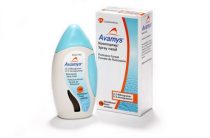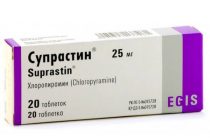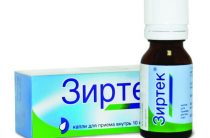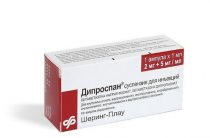To eliminate allergic attacks, it is often recommended to use a drug such as Claritin. It can also be taken as a prophylactic to prevent the recurrence of those chronic diseases whose pathogenesis is based on allergic inflammations (bronchial asthma and the like).
The drug belongs to the group of antihistamines: it selectively blocks histamine receptors. The impact occurs at the level of cellular structures involved in an allergic reaction. Thanks to this, with the help of Claritin, you can relieve the symptoms of the disease so that drowsiness and dryness of the mucous membranes do not occur.
Release form, composition, dosage
To date, the drug has two forms of release: syrup and tablets. Since Claritin for allergies is used not only for adults, but also for children, the syrup is prescribed just for small patients. It is much easier for them to take medicines in liquid form. Tablets are more convenient for adult allergy sufferers. Previously, the owners of the brand produced more drops and ointments (they were called l-Claritin).
If we talk about Claritin in the form of a syrup, then it is an uncolored solution of a transparent color or with a slight yellowish tinge. It has a homogeneous structure, without sediment and any impurities. This syrup is produced in dark glass bottles of 60 and 120 ml. The addition is a measuring spoon.
Tablets are oval, painted in an even white color. On one side there is a separating risk, and on the other there is an icon in the form of a vessel with the number 10. One package can contain 7, 10, 20 or 30 tablets.
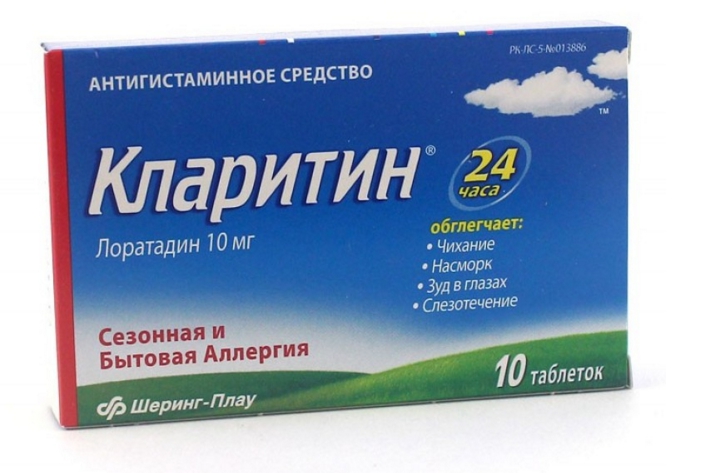
In Claritin, regardless of the form, the active ingredient is Loratadine. One tablet contains 10 mg of Loratadine, and 1 ml of ready-made syrup contains 1 mg. Given that the drug belongs to the anti-allergic spectrum, the auxiliary components are hypoallergenic. Let's look at them in a table.
| Auxiliary components in syrup | Auxiliary components in tablets |
|
|
Therapeutic effect
The composition of Claritin works in several directions at once: it has an antihistamine, antiallergic and antipruritic effect. Such effects are directly related to the blocking of histamine receptors. The drug begins to act literally within half an hour. The duration of the therapeutic effect is 24 hours, regardless of whether syrup or tablets are used.
The nature of allergies and the reaction of the human body to something alien is due to histamine. This is a special substance produced by cells in contact with an allergen. When histamine binds to the appropriate receptors, a chain of reactions starts. They are what lead to allergies. Under the action of histamine, blood flow increases, the skin and mucous membranes become inflamed, severe itching and a number of other symptoms (runny nose, sneezing, coughing, tearing) begin.
Thanks to Claritin, histamine receptors are blocked, which helps prevent the development of a reaction. Thanks to this blockage, histamine simply cannot be produced, and therefore there are no symptoms. Even if the symptoms have already appeared, then after the receptors are blocked, all uncomfortable sensations quickly pass, because there is no support at the cellular level.
Claritin is not able to pass through the blood-brain barrier, or bind to those histamine receptors that are located in the central nervous system. In this regard, the drug does not have a sedative effect (it is expressed in drowsiness). The agent acts selectively, choosing the receptors responsible for the development of allergies. This is one of the differences between Claritin and previous generation drugs (Dimedrol, Suprastin) - they provoke drowsiness in patients.
Application of Claritin: indications
Claritin is an antiallergic spectrum drug. Its use is determined by the fight against the symptoms of this disease. Indications for use are as follows:
- Pollinosis (seasonal runny nose of an allergic nature);
- Allergic rhinitis throughout the year;
- Allergic conjunctivitis of various types;
- Recurrent urticaria;
- Skin allergic diseases (eczema, dermatitis);
- Quincke's edema;
- Pseudo-allergy (to food);
- Allergic reaction to insect bites and other biological objects.
Thanks to the use of Claritin, you can get rid of a whole range of symptoms. Among them, experts distinguish such as:
- Mucous edema;
- sneezing and coughing;
- Nasal congestion;
- Bronchospasm;
- lacrimation;
- Itching;
- Burning;
- Eruptions.
Preparation Claritin: instruction
Tablets and syrup can be taken at any convenient time of the day, regardless of the meal. The medicine in any form should be washed down with clean water. The dosage is determined by a specialist depending on age and the presence of concomitant pathologies. Children under 3 years old are given syrup, and at an older age, you can drink Claritin in any convenient form of your choice.
Adolescents (from 12 years of age) and adults can take Claritin tablets once a day at a dosage of 10 mg. At the same time, 10 ml of syrup correspond to two measuring spoons (attached to the package) or one tablet. For those patients who suffer from hepatic or renal insufficiency or liver pathologies, care must be taken. To do this, Claritin intake begins with one tablet or two tablespoons of syrup every other day. Other regimens are also possible, before starting allergy treatment, it is better to consult with your doctor.
Attention: If allergy tests are indicated, then Claritin should be stopped 48 hours before the procedure, otherwise the results will be false negative.
Overdose
Cases of overdose with Claritin are recorded if the dose per day is more than 40 mg. Symptoms develop as follows:
- Drowsiness;
- Headache;
- Cardiopalmus.
It is worth being careful when choosing a dosage for babies. Self-medication can be very dangerous for the health of a small patient. In children weighing less than 30 kg, the following symptoms develop with an overdose:
- Cardiopalmus;
- skewed mouth;
- Violation of muscle tone;
- Worm-like slow finger movements;
- Torticollis;
- jerking oak;
- Tick and shake;
- Sweeping movements of the limbs.
Treatment for an overdose of Claritin is aimed at eliminating such symptoms. It is necessary to remove the drug from the body as soon as possible. This is done by washing the stomach with saline. Additionally, adsorbents are used: activated carbon is crushed and drunk with water.
Claritin: interaction with other drugs
Before using an allergy medicine, you should consult an allergist. During a visit to the medical office, concomitant diseases and methods of their treatment are necessarily specified. Ketoconazole, Cimetidine, Erythromycin can increase the concentration of Claritin in the patient's blood. It does not have any clinical manifestations. This feature is taken into account during the treatment of allergies in order to avoid overdose.
The use of Claritin for children
The medicine can be given to allergic children from the age of two. At the same time, up to 3 years - only in the form of a syrup to avoid risks (the baby can simply choke). After the age of three, the drug is taken in any form. Because of this intended purpose, the syrup is called children's Claritin.
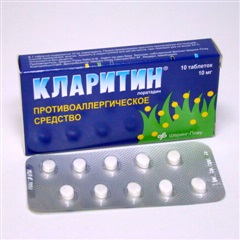
The dosage is determined taking into account the body weight of the child. It is best if the baby receives the daily dose at the same time. Usually the dosage is as follows:
- For children weighing more than 30 kg - 10 mg / day (1 tablet or 2 scoops of syrup);
- For children weighing up to 30 kg - 5 mg / day (half a tablet or 1 scoop) or 10 mg every other day at the discretion of the attending physician.
The duration of the course is set individually. It depends on the speed of elimination of manifestations of allergies. Usually, treatment lasts from a couple of days to 14 days. At the same time, Claritin can be used as a preventive measure for a long time.
There are situations when treatment with Claritin is indicated for children under two years of age. This is due to the high efficiency of the tool. It quickly relieves the infant of all symptoms, has practically no side effects in relation to the central nervous system. Pills are not given to infants, and the dosage is reduced:
- Up to 1 year - 1.5 ml / day;
- 1-2 years - 3 ml / day.
How to treat Claritin during pregnancy and lactation?
Studies on pregnant women have not been conducted. During animal testing, no adverse reactions to the fetus were identified. It is believed that pregnant women can treat allergies and its manifestations with Claritin if the benefit of such therapy outweighs the level of negative impact on the developing fetus.
Claritin tends to pass into breast milk. At the same time, its concentration is as high as that of the mother's blood. If there is a need to take pills during lactation, then breastfeeding is temporarily abandoned. In this case, the baby is transferred to the mixture until the treatment is over.
Side effects
Usually the drug is well tolerated by the body, regardless of the age of the patient. Side effects are extremely rare. However, the possibility of their occurrence should not be completely ruled out. In this case, the reactions to the components of the drug differ in children and adults.
Side effects in childhood:
- Nervousness;
- lethargy;
- Headache.
Side effects in adult patients:
- Headache;
- Drowsiness;
- fatigue;
- dry mouth;
- Gastritis;
- Nausea;
- Baldness;
- Rash;
- Tachycardia;
- Liver disorders at the functional level.
If you experience any alarming symptoms, you should immediately consult a doctor. If you have urgent questions, you can also contact our specialist. He will give a detailed consultation of an individual nature. We recommend that you do not self-medicate, so as not to complicate the course of the disease.
